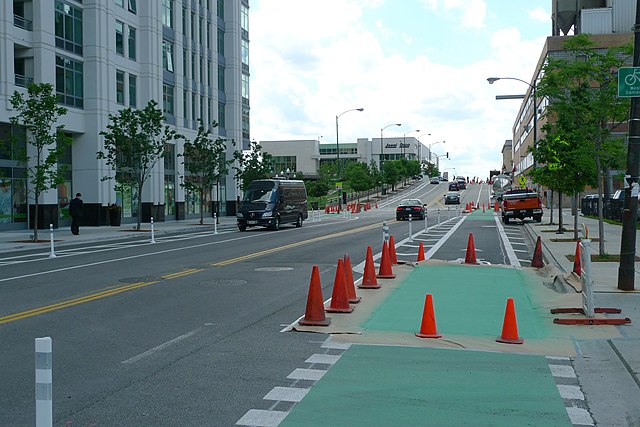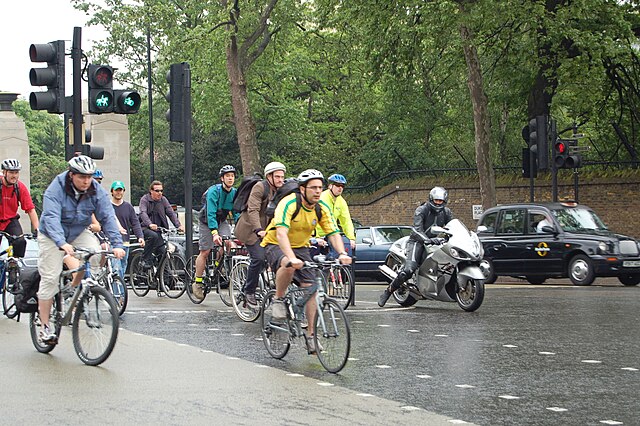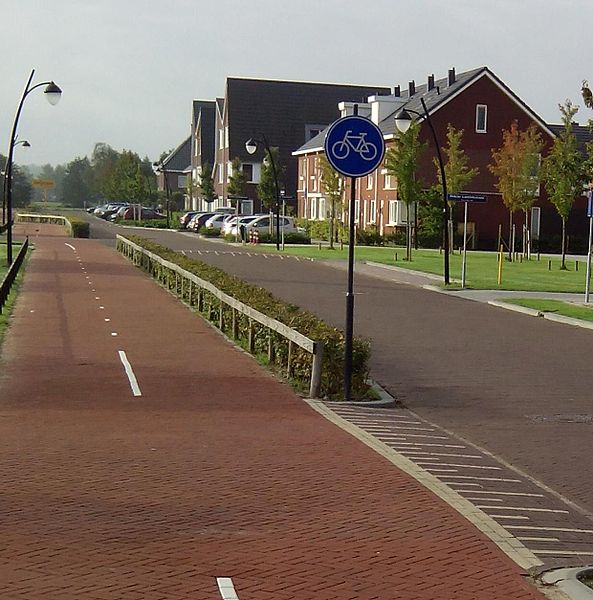Safety of cycling infrastructure
There is debate over the safety implications of cycling infrastructure. Recent studies generally affirm that segregated cycle tracks have a better safety record between intersections than cycling on major roads in traffic. Furthermore, cycling infrastructure tends to lead to more people cycling. A higher modal share of people cycling is correlated with lower incidences of cyclist fatalities, leading to a "safety in numbers" effect though some contributors caution against this hypothesis. On the contrary, older studies tended to come to negative conclusions about mid-block cycle track safety.
Dedicated cycling facility in New York City
Diagram showing relative increases in collision rates for users of a common type of segregated cycle path
Cycling infrastructure is all infrastructure cyclists are allowed to use. Bikeways include bike paths, bike lanes, cycle tracks, rail trails and, where permitted, sidewalks. Roads used by motorists are also cycling infrastructure, except where cyclists are barred such as many freeways/motorways. It includes amenities such as bike racks for parking, shelters, service centers and specialized traffic signs and signals. The more cycling infrastructure, the more people get about by bicycle.
Cycling infrastructure being placed in Chicago, Illinois
Signposted greenway, bordering on a gracht in Nordhorn, Germany
Cyclists use a segregated cut through of a busy interchange in London at rush hour.
This fietspad (bicycle path) is in the Netherlands safely linking housing with decent street lights.






